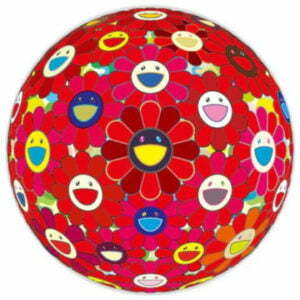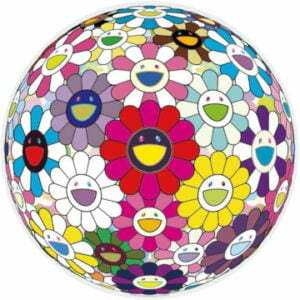My wife and I recently took a trip to Las Vegas – just the two of us and left the kids at home. It was a nice little get away from our typical daily routine of waking up early to make breakfast for the kids, to bathing them, to changing diapers and to dealing with the constant fighting and occasional crying (or is it occasional crying and constant fighting).

While on the Las Vegas trip, we spent time at the Hoover Dam and roamed around the Grand Canyon. We also did the Skywalk at the Grand Canyon. It is a semi-circular pathway which comes out from the cliff line with see through glass providing a view of the depth of the Canyon below, the blue sky above and a spectacular view of Eagle Point. It was surely a bucket list item to behold and now can be crossed off the list.
Of course, in addition to the educational portion of the trip (my wife’s term for the side trip to Hoover Dam/Grand Canyon), we also got to experience all the other funs of Las Vegas. We explored the Vegas strip, visited downtown Vegas, ate at nice restaurants, saw a few shows and spent some time at the casinos. All and all, it was a great time for us.
One of the mornings, we spent time walking around Las Vegas window shopping at various stores. We came across an art gallery. It was a Martin Lawrence Gallery and there are 7 in the nation. The gallery sells arts ranging from the modern Masters such as Picasso and Miro to newer modern artists who are still living today.
We have moved into our new home about a year ago and have yet to decorate the walls. Numerous visitors have commented how white, plain and sterile the walls look. We figure it would be a good to spend some time shopping for decorative artwork.
Upon entering into the gallery, we were greeted by a couple of salespeople. One of them named Dave took his time to help us out. He was the floor sales manager and spent time with us. He asked what we like as we were walking the gallery looking at the artwork they have up. When we identified a piece we like to him or spent some extra time looking at a piece of work, he would volunteer information about the artist as well as a brief history of the artist’s style or the work itself.
He was very helpful in helping us hone in on what we like. We came across a few pieces we thought would look good on the wall in the girls’ room. They are artwork by a popular living Japanese artist Takashi Murakami. He specializes in “superflat”, which describes both the aesthetic characteristics of the Japanese artistic tradition and the nature of post-war Japanese culture and society. His flower bowl artwork is very popular.

We like the color and liveliness of his prints. His pictures of growing flowers with smiles on their faces are a nice reflection of how we want our kids to continue to grow and to be happy. We didn’t know anything about the artist and, naturally, Dave spent some time educating us on the artist and his works. He even mentioned he is a big believer in the value of Takashi’s work and owes a piece himself.
The gallery was running a promotion on his art. It is basically buy one and get a second at half price. There were two pieces we like and thought we can hang one above each of our girl’s bed. The asking price for the first piece is about $10,000 and the price for the second piece is $7,000. Given the promotion, the offering price for both pieces is $12,275 which includes shipping.



We were deliberating hard to see if we want to get his work. We really like the artwork but were not familiar with the artist. We also never purchased any artwork from a gallery before. Additionally, we were neophytes in purchasing from an art gallery or in art collection in general. $12,275 was a big purchase for us. Therefore, after spending some time with Dave, we said we were getting a bit hungry and needed to go out to grab some lunch. My wife and I said we would need to talk it over during lunch time.
Time away from Dave, the salesperson, gave us time to discuss this potential purchase. Making a big purchase can feel scarier than looking down into the depth of the Grand Canyon from the Skywalk. We typically use the following process as a guide prior to making a sizable purchase:
Question the Salesperson and Use Judgment and Skepticism to Weigh the Responses
To start off, you have to understand the salesperson’s job is to sell you on the item. It doesn’t matter if it is a piece of art, a car, jewelry, clothes or insurance. Their job is to sell. That is how they make their money. You always have to keep this in mind and take everything they say with a grain of salt.
Dave thinks there is a lot of upside to works from Takashi Murakami and represented to us that he personally owes Takashi’s work. While I have no reason to doubt Dave’s statement, I also know that he is interested in making the sale and might say things he believes we want to hear. Once you understand that it is the salesperson’s job to sell, you can then proceed to extract as much information as possible on the item.
The salesperson, if he or she is any good, should be very knowledgeable, if not an expert, in the item for sale. I asked him why he thinks there is a lot of upside to Takashi. He proceeded to answer the question by volunteering this nugget of information that he once sold 8 pieces of Takashi’s work to a celebrity a couple of years ago.
I asked him how much he sold those pieces for to get a sense of how much Takashi’s work has appreciated. He said he sold them for the same price as the price he is offering those similar pieces to us. If this is true, then it sure doesn’t sound good for the celebrity who made the 8 piece purchase.
Not only didn’t the celebrity get a bulk discount, Takashi’s artwork hasn’t gone up in value over the past two years despite a rising art market. This doesn’t sound very promising for there to be great upside on the artist.
Get Educated and Understand What You Are Buying
Before making a big purchase such as a car, house or, in my case, artwork, you need to understand what you are buying. In our case, we never heard of Takashi prior to entering into the gallery. While we liked his work, we knew nothing about his background which could influence the value of his work. He is still a living artist. My wife and I had a slew of questions including how accomplished is he, what has he done, how much did some of his artwork go for, what style is his work, and what are the more popular work of his.
We didn’t have any of that information. This makes it very hard to understand the value of the artwork despite the fact we really like the aesthetic look of the pieces. A few good ways of getting better educated on the item are i) to ask questions of the salesperson (while in the back of your head still taking some of the information with a grain of salt), ii) to perform research online, iii) to talk to specialists such as other gallery owners or salespeople to see if there is consensus of information and iv) to talk directly to the source (examples include the artist himself or, in a house purchase, the owner of the house as opposed to the seller’s agent).
At the end of the day, it is your money and you need to understand what you are getting in return for it.
Comparison Shop on Price
Once you gain an understanding of the item, look up how much the item is. This is the surest way to get a fair price. Perform a search for what price other folks are selling the item. If the item you are looking to buy is unique, research how much a comparable item would be. Once again, you can perform a search online, attend conventions or conferences, talk to other salespeople in the industry or talk directly with the source. You can also talk with someone who has made a similar purchase as you to see how much the person paid for the item.
Don’t Be Afraid to Negotiate
Once you have a price in mind, don’t be afraid to negotiate. When Dave offered to sell two of the pieces for a total price of $12,275 and said it was a great deal given the promotion at the gallery, I asked if he would be willing to let the two go for $10,000. It was my way to test how firm he is with the price, and to see if there is additional wiggle room above and beyond the promotion price.
You cannot be afraid to negotiate and ask for a lower price. No salesperson will give you a lower amount unless you ask for it. The salesperson’s job is to sell you the item for the highest price possible to generate a bigger commission for him, and more income for his employer. Therefore, you have to take it upon yourself to negotiate and to look out for your own interest. The worse thing the salesperson can say is he can’t go any lower and the offered price is what it is. But, if you can save hundreds or even thousands by spending 5 minutes negotiating and asking for a lower price, isn’t that time very well spent?
Ask If the Store Is Running Any Specials or Promotions
Another way to get a better price on a purchase in addition to negotiating is to ask if the store is offering any specials, discounts or promotions. Sometimes a salesperson might not have the flexibility to provide lower pricing but can offer specials or promotions which might be a better value at a lower price. This can be another way for you to get the best pricing available.
When in Doubt, Delay the Purchase
When making a big purchase, I always believe it is okay to take your time. Obtaining more knowledge, understanding what you are buying, performing a price comparison and negotiating pricing can involve a lot of work and be time consuming. Therefore, never hesitate to delay the purchase if you have the ability or option. Make sure you are truly comfortable before pulling the trigger on the purchase.
Look for Alternatives if Necessary
Finally, you can look for alternatives to purchasing the item if you don’t think it makes sense to buy it today. In our case, instead of buying an original artwork from a popular artist for $12,000+, we can buy a mass produced replica for a fraction of the price. We can also opt to put up family pictures, color the wall a different color than white or apply wallpaper to decorate the girls’ room without having to spend thousands of dollars doing it. Or we can look to purchase a Takashi from an auction house and not a gallery to save on the gallery markup.
Always try to figure out an alternative and look for options when you are unsure of the purchase.

At the very end, we left Las Vegas without buying the Takashi artwork from the Martin Lawrence gallery. We did some research and thought the price, even after accounting for the promotion, was high for the pieces. My wife and I still like the idea of getting the Takashi flower bowl artwork for the girls’ room. We will probably end up buying them from somewhere else for a lower price. It has almost been a year at the new home. It is time for us to get to work on the wall decoration.
To the audience: Did you make any big purchases recently? How did you decide the purchase was necessary? How did you get comfortable with the price of the item? Were there any alternatives you could have chosen instead?

Many people work hard to better their physical and mental health. What about their financial health?
I started this blog back in 2019 to help people better their financial health as well.
My financial journey began with tens of thousands in student loan debt. Over the span of 20 years, I am close to achieving financial independence.
I truly believe anyone can get to strong financial health. Hopefully, this blog can help you on your financial journey to greater wealth and financial independence.
You can read more about me here.
Thank you for visiting. Come again soon!

Rich,
The timing of your article is perfect. Fresh out of debt and driving an old Nissan Altima with 180k miles on it, I need to start looking for a new(er) vehicle. Luckily with cars, there’s a lot of information to help me make a well educated decision. However, the price of similar cars can still vary widely. For example, is it smart to buy a $25K 4Runner when a $20K Nissan Rouge has the same utility? The answer is, it’s probably not and I’d be spending the $5K for the “cool” of the car.
Hi Greg,
My take on car buying – unless the cost is insignificant for you – go with the less expensive option. Given a car is a depreciating asset, my preference is to spend as little as possible on a car.
My car of choice at this time is a used F150 Platinum. My current one I bought used, 3 years old, 2.5 years ago. It’s not great on gas, but I drive very little anyway (work from home most of the time).
What do you drive, Rich?
And Greg, I’d go with the Nissan Rouge, especially if you drive a lot.
I drive a 7 seater SUV. It is on a 3 year lease. I have young kids so my preference is to drive a newer car for safety purposes.